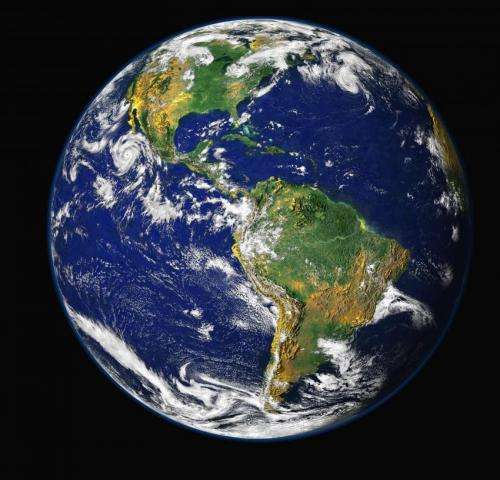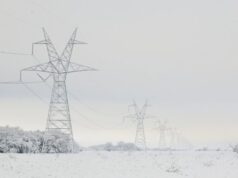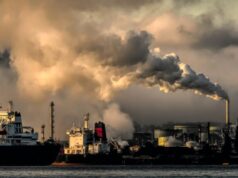A rapid rise in temperature on ancient Earth triggered a climate response that may have prolonged the warming for many thousands of years, according to scientists.
Their study, published online in Nature Geoscience, provides new evidence of a climate feedback that could explain the long duration of the Paleocene-Eocene Thermal Maximum (PETM), which is considered the best analogue for modern climate change.
The findings also suggest that climate change today could have long-lasting impacts on global temperature even if humans are able to curb greenhouse gas emissions.
“We found evidence for a feedback that occurs with rapid warming that can release even more carbon dioxide into the atmosphere,” said Shelby Lyons, a doctoral student in geosciences at Penn State. “This feedback may have extended the PETM climate event for tens or hundreds of thousands of years. We hypothesize this is also something that could occur in the future.”
Increased erosion during the PETM, approximately 56 million years ago, freed large amounts of fossil carbon stored in rocks and released enough carbon dioxide, a greenhouse gas, into the atmosphere to impact temperatures long term, researchers said.
Find your dream job in the space industry. Check our Space Job Board »
Scientists found evidence for the massive carbon release in coastal sediment fossil cores. They analyzed the samples using an innovative molecular technique that enabled them to trace how processes like erosion moved carbon in deep time.
“This technique uses molecules in a really innovative, out-of-the-box way to trace fossil carbon,” said Katherine Freeman, Evan Pugh University Professor of Geosciences at Penn State. “We haven’t really been able to do that before.”
Global temperatures increased by about 9 to 14.4 degrees Fahrenheit during the PETM, radically changing conditions on Earth. Severe storms and flooding became more common, and the warm, wet weather led to increased erosion of rocks.
As erosion wore down mountains over thousands of years, carbon was released from rocks and transported by rivers to oceans, where some was reburied in coastal sediments. Along the way, some of the carbon entered the atmosphere as greenhouse gas.
“What we found in records were signatures of carbon transport that indicated there were massive erosion regimes occurring on land,” Lyons said. “Carbon was locked on land and during the PETM it was moved and reburied. We were interested in seeing how much carbon dioxide that could release.”
Lyons was studying PETM core samples from Maryland, in a location that was once underwater, when she discovered traces of older carbon that must have once been stored in rocks on land. She initially believed the samples were contaminated, but she found similar evidence in sediments from other Mid-Atlantic sites and Tanzania.
Carbon in these samples did not share common isotope patterns of life from the PETM and appeared oily, as if it been heated over long periods of time in a different location.
“That told us what we were looking at in the records was not just material that was formed during the PETM,” Lyons said. “It was not just carbon that had been formed and deposited at that time, but likely represented something older being transported in.”
The researchers developed a mixing model to distinguish the sources of carbon. Based on the amount of older carbon in the samples, scientists were able to estimate how much carbon dioxide was released during the journey from rock to ocean sediment.
They estimated the climate feedback could have released enough carbon dioxide to explain the roughly 200,000-year duration of the PETM, something that has not been well understood.
The researchers said the findings offer a warning about modern climate change. If warming reaches certain tipping points, feedbacks can be triggered that have the potential to cause even more temperature change.
“One lesson we can learn from this research is that carbon is not stored very well on land when the climate gets wet and hot,” Freeman said. “Today, we’re pushing the system out of equilibrium and it’s not going to snap back, even when we start reducing carbon dioxide emissions.”
Additional authors from Penn State are Timothy Bralower, Elizabeth Hajek and Lee Kump, professors of geosciences; and Ellen Polites, an undergraduate majoring in geosciences. Kump is also dean of the College of Earth and Mineral Sciences.
Researchers from the University of California Santa Cruz, the U.S. Geological Survey, the University of Delaware and the University of Louisiana at Lafayette also collaborated on this project.
Provided by:
Duke University
More information:
Shelby L. Lyons et al. Palaeocene–Eocene Thermal Maximum prolonged by fossil carbon oxidation. Nature Geoscience (2018). DOI: 10.1038/s41561-018-0277-3
Image:
A composite image of the Western hemisphere of the Earth
Credit: NASA











